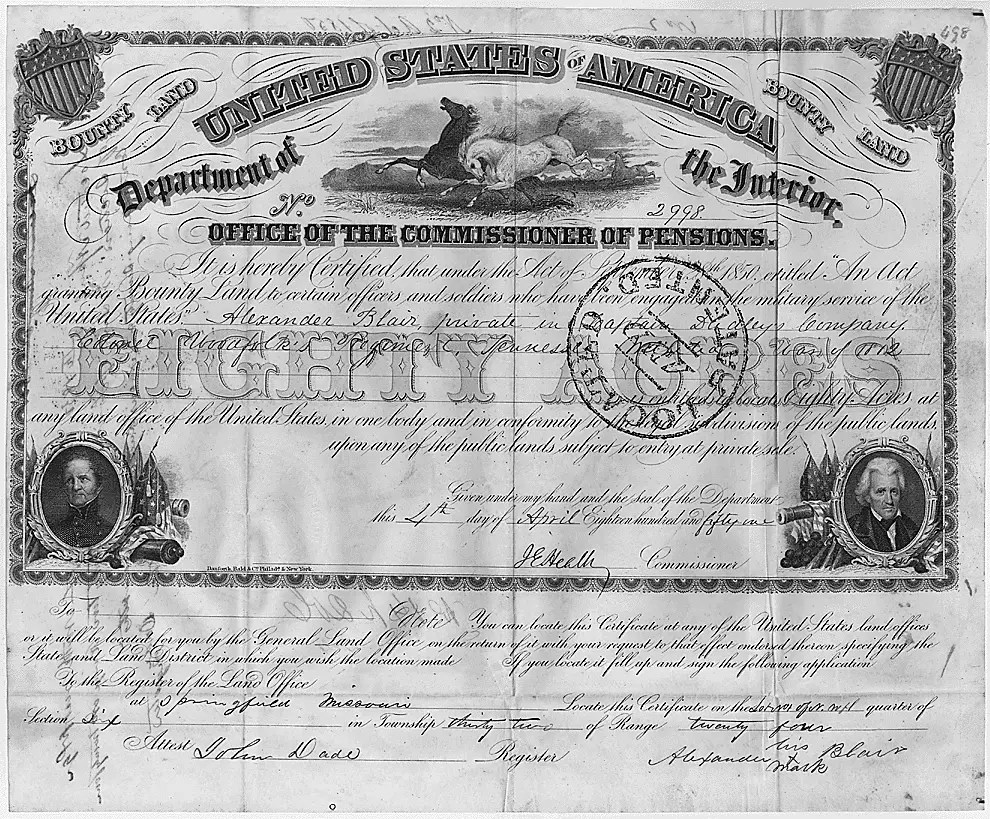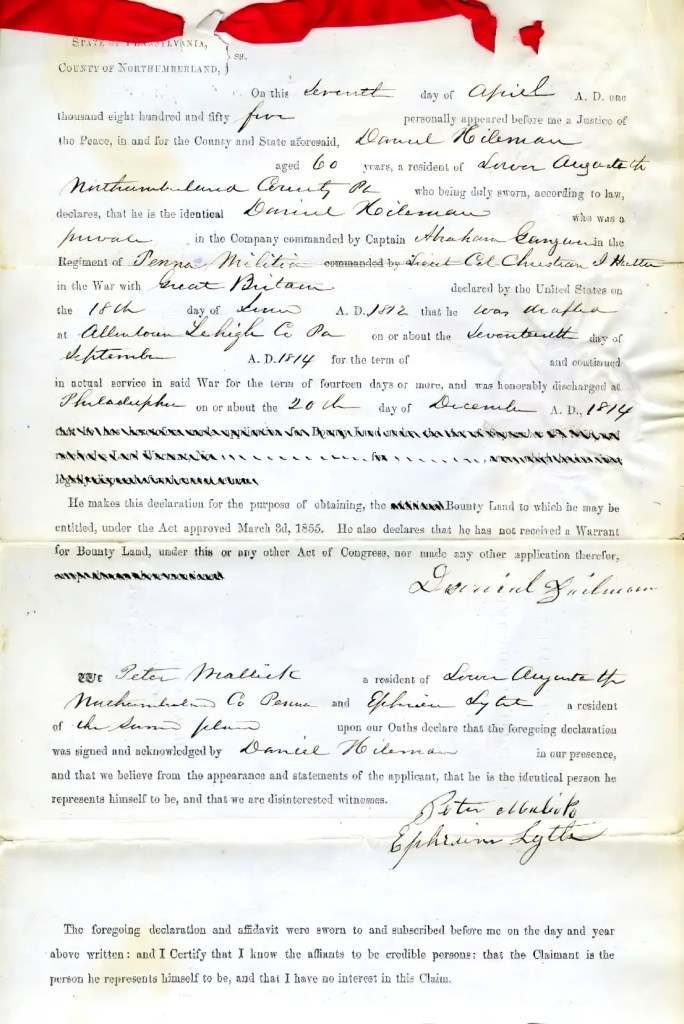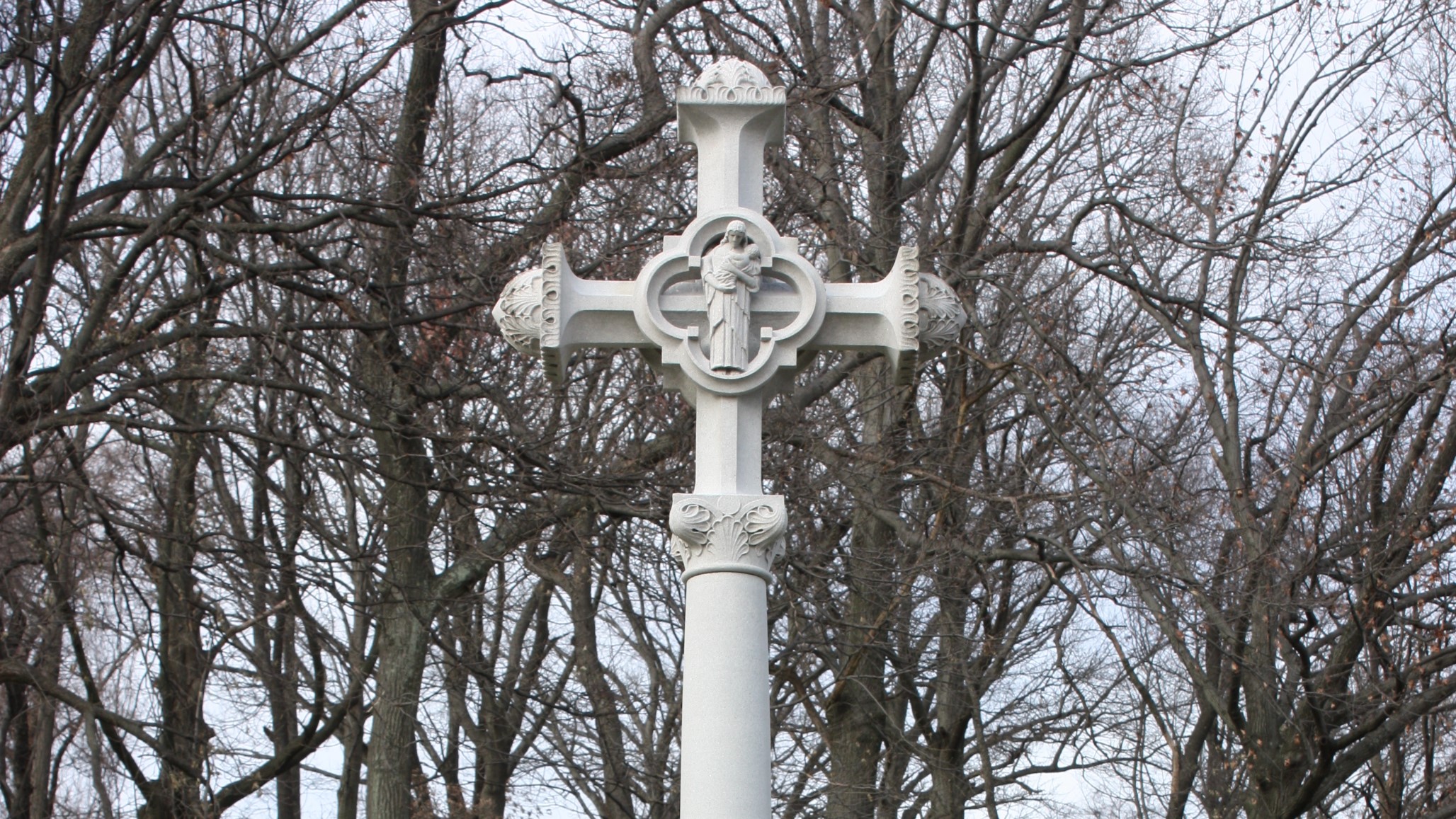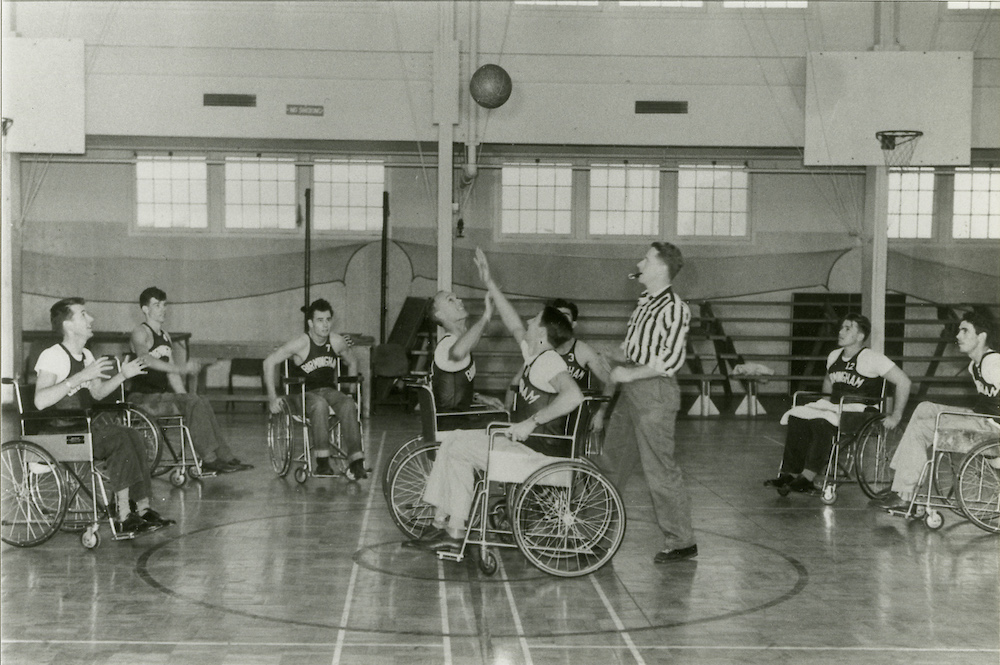
The payment provided to soldiers wounded during the American Revolution is the nation’s oldest form of Veterans benefit. Bounty land warrants are a close second. Three weeks after passing the law compensating the injured, the Continental Congress in September 1776 also approved a resolution awarding grants of public land to all who served in the Continental Army for the duration of the conflict. The amount of land varied with rank, ranging from 100 acres for privates and noncommissioned officers to 500 acres for colonels and 1,100 acres for major generals. After the Revolution, the federal government reserved several million acres in Ohio for the settlement of Veterans who earned a bounty land warrant. This tract of land was part of the territory the Native American tribes of the region ceded by treaty in 1795 after the Battle of Fallen Timbers.
For a nation with limited financial resources, the bounties were an appealing tool to encourage enlistment and reward military service. Congress readily used the promise of free land for this purpose during the War of 1812 and the Mexican War, although it restricted eligibility to enlisted men and noncommissioned officers. In both conflicts, the size of the grant was fixed at 160 acres. The government set aside six million acres in Michigan, Illinois, and Louisiana for War of 1812 recruits who enlisted for five years or until discharged. Volunteers for the Mexican War benefited from more generous terms. They qualified for the bounty after only a year of service and could exchange their warrants for any property in the public domain. In the 1850s, Congress responded to pressure from survivors of the War of 1812 and passed a series of more liberal bounty laws. These measures culminated in the 1855 act that awarded 160 acres to Veterans (or their widows or minor children) of any war since 1790, regardless of rank or type of military service, provided they served at least 14 days or fought in one battle.

More than 260,000 Veterans or their heirs claimed warrants under the 1855 act. Overall, the different bounty land laws enacted between 1776 and 1855 resulted in the federal government dispensing over 500,000 warrants encompassing more than 61 million acres. How many Veterans used the warrants to obtain a parcel of land is unknown. Most probably sold them to land speculators at a reduced rate. The practice of issuing land grants to new recruits ended with the Mexican War. During the Civil War, Congress decided to make the western lands freely available to all Americans by passing the Homestead Act of 1862. While this legislation and the earlier bounty laws were a boon to those who acquired property, these measures had a devastating effect on the Indian nations that were dispossessed from the land.
By Jeffrey Seiken, Ph.D.
Historian, Veterans Benefits Administration
Share this story
Related Stories
History of VA in 100 Objects
In the waning days of World War I, French sailors from three visiting allied warships marched through New York in a Liberty Loan Parade. The timing was unfortunate as the second wave of the influenza pandemic was spreading in the U.S. By January, 25 of French sailors died from the virus.
These men were later buried at the Cypress Hills National Cemetery and later a 12-foot granite cross monument, the French Cross, was dedicated in 1920 on Armistice Day. This event later influenced changes to burial laws that opened up availability of allied service members and U.S. citizens who served in foreign armies in the war against Germany and Austrian empires.
History of VA in 100 Objects
Basketball is one of the most popular sports in the nation. However, for paraplegic Veterans after World War II it was impossible with the current equipment and wheelchairs at the time. While VA offered these Veterans a healthy dose of physical and occupational therapy as well as vocational training, patients craved something more. They wanted to return to the sports, like basketball, that they had grown up playing. Their wheelchairs, which were incredibly bulky and commonly weighed over 100 pounds limited play.
However, the revolutionary wheelchair design created in the late 1930s solved that problem. Their chairs featured lightweight aircraft tubing, rear wheels that were easy to propel, and front casters for pivoting. Weighing in at around 45 pounds, the sleek wheelchairs were ideal for sports, especially basketball with its smooth and flat playing surface. The mobility of paraplegic Veterans drastically increased as they mastered the use of the chair, and they soon began to roll themselves into VA hospital gyms to shoot baskets and play pickup games.
History of VA in 100 Objects
After World War I, claims for disability from discharged soldiers poured into the offices of the Bureau of War Risk Insurance, the federal agency responsible for evaluating them. By mid-1921, the bureau had awarded some amount of compensation to 337,000 Veterans. But another 258,000 had been denied benefits. Some of the men turned away were suffering from tuberculosis or neuropsychiatric disorders. These Veterans were often rebuffed not because bureau officials doubted the validity or seriousness of their ailments, but for a different reason: they could not prove their conditions were service connected.
Due to the delayed nature of the diseases, which could appear after service was completed, Massachusetts Senator David Walsh and VSOs pursued legislation to assist Veterans with their claims. Eventually this led to the first presumptive conditions for Veteran benefits.






